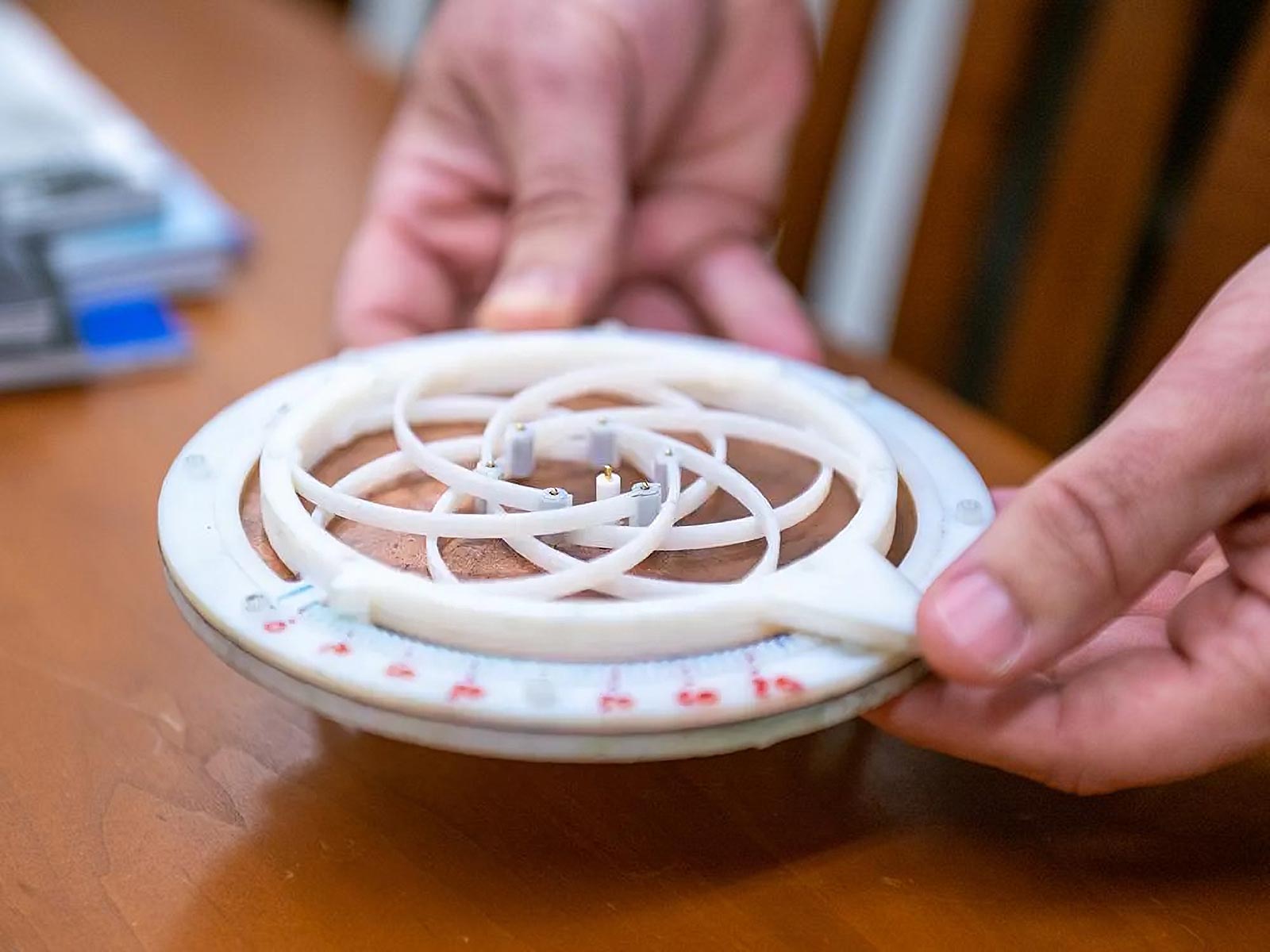
Researchers illustrated and designed a round, iris-shaped patch antenna prototype the use of industrial electromagnetic simulation device. Although the prototype is best rather better than a human palm, the expertise may also be scaled to the built-in circuit stage for upper frequencies or greater in measurement for decrease frequency packages, consistent with researchers. Credit score: Jeff Xu/Penn State
Researchers create compliant mechanism-enabled, reconfigurable antenna.
Reconfigurable antennas — the ones that may music houses like frequency or radiation beams in real-time, from afar — are integral to long run conversation community methods, like 6G. However many present reconfigurable antenna designs can fall brief: they disorder in prime or low temperatures, have energy boundaries, or require common servicing.
To handle those boundaries, electric engineers within the Penn State School of Engineering mixed electromagnets with a compliant mechanism, which is similar mechanical engineering idea at the back of binder clips or a bow and arrow. They revealed their proof-of-concept reconfigurable compliant mechanism-enabled patch antenna these days (February 13, 2023) within the magazine Nature Communications.
“Compliant mechanisms are engineering designs that incorporate elements of the materials themselves to create motion when force is applied, instead of traditional rigid body mechanisms that require hinges for motion,” said corresponding author Galestan Mackertich-Sengerdy, who is both a doctoral student and a full-time researcher in the college’s School of Electrical Engineering and Computer Science (EECS). “Compliant mechanism-enabled objects are engineered to bend repeatedly in a certain direction and to withstand harsh environments.”
When applied to a reconfigurable antenna, its complaint mechanism-enabled arms bend in a predictable way, which in turn changes its operating frequencies — without the use of hinges or bearings.
“Just like a chameleon triggers the tiny bumps on its skin to move, which changes its color, a reconfigurable antenna can change its frequency from low to high and back, just by configuring its mechanical properties, enabled by the compliant mechanism,” said co-author Sawyer Campbell, associate research professor in EECS.
The compliant mechanism-enabled designs supersede existing origami design technologies, named after the Japanese art of paper folding, which are reconfigurable but do not have the same advantages in robustness, long-term reliability, and high-power handling capability.
“Origami antenna designs are known for their compact folding and storage capabilities that can then be deployed later on in the application,” Mackertich-Sengerdy said. “But once these origami folded structures are deployed, they usually need a complex stiffening structure, so that they don’t warp or bend. If not carefully designed, these types of devices would suffer environmental and operational lifetime limitations in the field.”
The team illustrated and designed a circular, iris-shaped patch antenna prototype using commercial electromagnetic simulation software. They then 3D printed it and tested it for fatigue failures as well as frequency and radiation pattern fidelity in Penn State’s anechoic chamber, a room insulated with electromagnetic wave-absorbing material that prevents signals from interfering with antenna testing.
Though the prototype — designed to target a specific frequency for demonstration — is only slightly larger than a human palm, the technology can be scaled to the integrated circuit level for higher frequencies or increased in size for lower frequency applications, according to researchers.
Compliant mechanism research has increased in popularity due to the rise of 3D printing, according to the researchers, which enables endless design variations. It was Mackertich-Sengerdy’s background in mechanical engineering that gave him the idea to apply this specific class of compliant mechanisms to electromagnetics.
“The paper introduces compliant mechanisms as a new design paradigm for the entire electromagnetics community, and we anticipate it growing,” said co-author Douglas Werner, John L. and Genevieve H. McCain Chair Professor of EECS. “It could be the branching off point for an entirely new field of designs with exciting applications we haven’t dreamed of yet.”
Reference: “Tailored compliant mechanisms for reconfigurable electromagnetic devices” by Galestan Mackertich-Sengerdy, Sawyer D. Campbell and Douglas H. Werner, 13 February 2023, Nature Communications.
DOI: 10.1038/s41467-023-36143-6
The Penn State College of Engineering’s John L. and Genevieve H. McCain endowed chair professorship supported this work.
Supply By means of https://scitechdaily.com/reconfigurable-antenna-merges-mechanical-engineering-and-electromagnetics-for-next-generation-technology/


